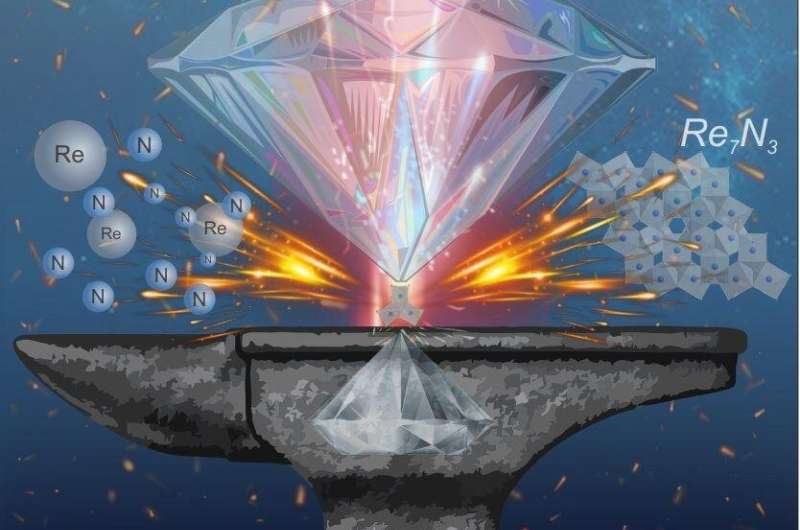Jules Verne could not even dream of this: A research team from the University of Bayreuth, together with international partners, has pushed the boundaries of high-pressure and high-temperature research into cosmic dimensions. For the first time, they have succeeded in generating and simultaneously analyzing materials under compression pressures of more than one terapascal (1,000 gigapascals). Such extremely high pressures prevail, for example, at the center of the planet Uranus (Uranus core); they are more than three times higher than the pressure at the center of the Earth. In Nature, the researchers present the method they have developed for the synthesis and structural analysis of novel materials.
Theoretical models predict very unusual structures and properties of materials under extreme pressure-temperature conditions. But so far, these predictions could not be verified in experiments at compression pressures of more than 200 gigapascals. On the one hand, complex technical requirements are necessary to expose material samples to such extreme pressures, and on the other hand, sophisticated methods for simultaneous structural analyses were lacking. The experiments published in Nature therefore open up completely new dimensions for high-pressure crystallography: materials can now be created and studied in the laboratory that exist—if at all—only under extremely high pressures in the vastness of the universe.
“The method we have developed enables us for the first time to synthesize new material structures in the terapascal range and to analyze them in situ—that is: while the experiment is still running. In this way, we learn about previously unknown states, properties and structures of crystals and can significantly deepen our understanding of matter in general. Valuable insights can be gained for the exploration of terrestrial planets and the synthesis of functional materials used in innovative technologies,” explains Prof. Dr. Leonid Dubrovinsky of the Bavarian Geoinstitute (BGI) at the University of Bayreuth, the first author of the publication.
In their new study, the researchers show how they have generated and visualized in situ novel rhenium compounds using the now discovered method. The compounds in question are a novel rhenium nitride (Re₇N₃) and a rhenium-nitrogen alloy. These materials were synthesized under extreme pressures in a two-stage diamond anvil cell heated by laser beams. Synchrotron single-crystal X-ray diffraction enabled full chemical and structural characterization.
“Two and a half years ago, we were very surprised in Bayreuth when we were able to produce a superhard metallic conductor based on rhenium and nitrogen that could withstand even extremely high pressures. If we apply high-pressure crystallography in the terapascal range in the future, we may make further surprising discoveries in this direction. The doors are now wide open for creative materials research that generates and visualizes unexpected structures under extreme pressures,” says the study’s lead author, Prof. Dr. Natalia Dubrovinskaia from the Laboratory of Crystallography at the University of Bayreuth.
You may like to read:
On-chip circuit produces up to six microwave photons at the same time


